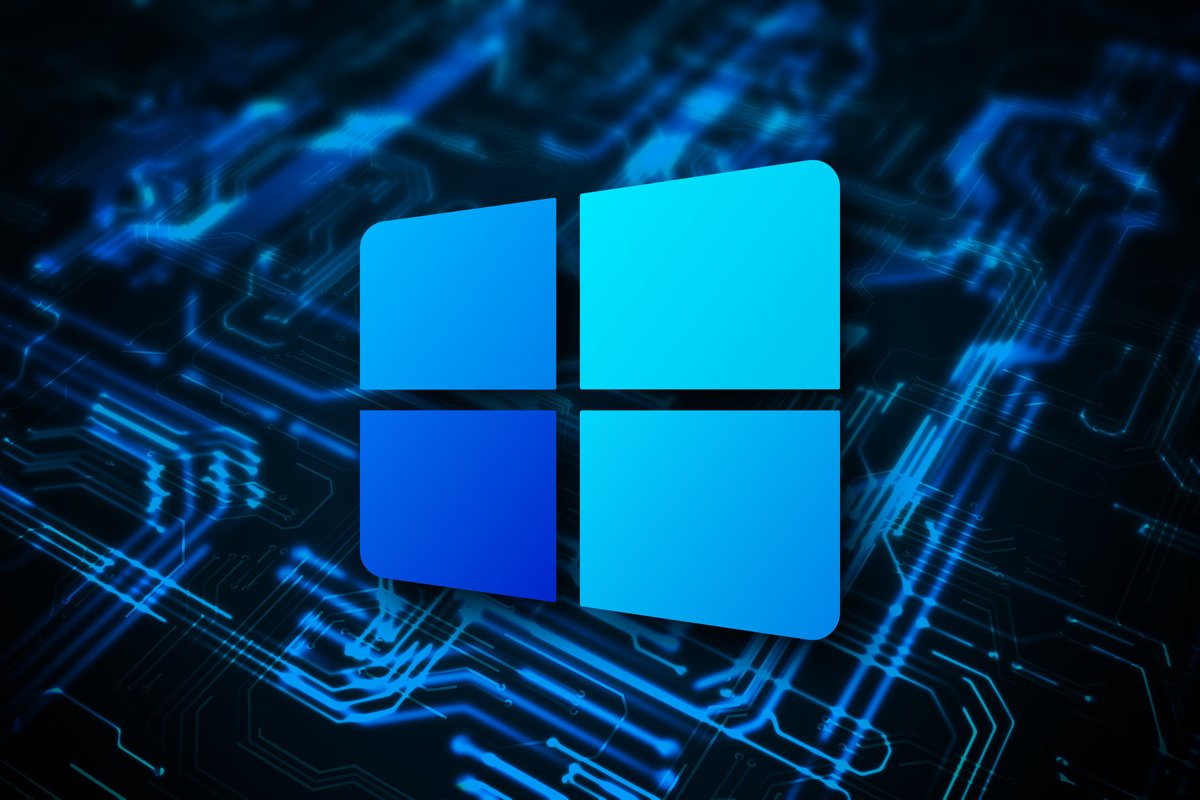Microsoft declared it would only offer updates for 10 years..Even Windows 10
Microsoft will shut down support for Windows 10 in just over four years, in October 2025. The notice, found in a support document that outlined Windows 10’s support lifecycle, raised a minor ruckus starting Sunday, when Thurrott.com reported on the end of support, claiming, “This is the first time Microsoft has ever described the end of support for Windows 10.” Other tech outlets followed suit on Monday, June 14, with similar stories.
What’s the deal? Why would Microsoft make a potentially upending announcement on a site that, while important, is at best obscure to most users? Or was it all just a misunderstanding?
Microsoft alone knows definitive answers to those questions, and others regarding support — the part of Windows that’s absolutely critical for enterprise and IT planning. But we can suss out some bits of information from all this as we — for the umpteenth time — toss metaphorical yarrow stalks in an effort to divine Windows’ I Ching, the Support Lifecycle.
It’s always been October 2025
In black and white, Microsoft states that Windows 10 — Home, Pro, Enterprise and Education — will be retied Oct. 14, 2025, or four years and four months from now.
A blue-boxed note adds to the “it’s ending “message, reminding customers that, “Microsoft will continue to support at least one Windows 10 Semi-Annual Channel until October 14, 2025 (emphasis added).”
But this date — at least the month and year — have been linked to Windows 10’s retirement since, well, forever.
Weeks before Windows 10 July 29, 2015, launch, Microsoft declared that it would support the OS with updates for 10 years, until October 2025, and in the traditional Mainstream and Extended periods of half a decade each. (So, exactly as was, say, Windows 7 and all the Windows before that.) As Computerworld reported that July, Microsoft’s accounting of that 10-year stretch of support for Windows 10 finally clarified Microsoft’s obtuse statements about support. Since January 2015, Microsoft had said that 10 would be sustained “for the supported lifetime of the device,” a brand new phrase that it infuriatingly refused to define no matter how many times it was asked to do so.
In fact, the support URLs cited by Thurrott.com and echoed by other outlets have included the Oct. 14, 2025, date and even the highlighted warning since at least October 2020, according to the Internet Archive’s Wayback Machine.
(Although the Wayback Machine was explicit on the history of the Home/Pro and Enterprise/Education SKUs’ end-of-support pages, Computerworld reporters, who have visited those URLs scores of times this year alone to verify retirement dates for specific feature upgrades, didn’t remember the big blue box and didn’t notice the 10-year ending for Windows 10 overall. Strange.)
In other words, no matter how many online articles assert the 2025 retirement is a new thing, a deadline only now expressed by Microsoft, that’s simply not so.
If it’s not new, why the brouhaha?
It’s not surprising that so many thought the Oct. 14, 2025, deadline was new and newsworthy.
Although Microsoft said six years ago that Windows 10 would exit support in a decade, just like every other version of its operating system, during those years everyone forgot the pledge. Not because of pages flying from a stock calendar shot, but because of the cognitive dissonance between what Microsoft said and what Microsoft did.
Windows 10 was, to use Microsoft’s words, “the last version of Windows,” implying that 10 would last, in some fashion, forever. If eternal, how could there be an it’s-dead date?
Likewise, Microsoft pitched Windows 10 as a software-as-a-service (SaaS) creature that, by its nature, was everlasting, a Darwinian thing that evolved over time, mutated even, in which individual entities certainly expired (as do specific versions) but the species lived on (until a figurative meteor, the dissolution of the company, wiped it out). Services do not have retirement dates.
More subtly, Microsoft’s attention, once fixed on Windows (or so it seemed) had very much wandered to more lucrative products and services, like Azure and anything that could have cloud tacked onto it. Windows coasted, rested, if not on any laurels then on the practical impossibility of a rival to replace it in the commercial and organizational worlds. What purpose would it serve to overhaul Windows — in a fashion similar to those of 2001 (XP) or 2009 (Windows 7) — when its prime customers not only could not be moved by marketing but would object to substantial change just for change sake? It all seems so wasteful of time and effort.
All of that, from promises of “last version” to Windows’ reduced role in Redmond’s grand plans, were repudiated by sudden talk of retirement. No wonder interest was sparked: If retirement is Windows 10’s end state, what has been the point of the last six years? Wasn’t Windows 10 to be different, a radical split from the company’s OS traditions?
So, Windows 10 will end. How will that work?
The most interesting bit on the support lifecycle pages for Windows 10 Home, Pro, Enterprise and Education is the warning which states, “Microsoft will continue to support at least one Windows 10 Semi-Annual Channel until October 14, 2025.”
While that did not represent anything close to a plan for how Microsoft will sunset Windows 10 — ideally, next week’s virtual event on June 25 will outline the operating system’s retirement — there are things that can be gleaned from the confluence of the notice and Windows release cadence.
Because of the intervals between a given feature upgrade release and its expiration — the 18 or 30 months of support Microsoft has pledged — the company will have to stop issuing feature upgrades long before Oct. 14, 2025.
Assuming Microsoft continues to deliver two feature upgrades a year, with the first-half release supported for 18 months and the second-half release supported for 30 months, the last upgrade would have to be Windows 10 24H1, with a support cutoff a year and a half later, at that Oct. 14, 2025, date. The final yyH2 feature upgrade (supported for 30 months) would be 22H2; that SKU would exit support in April or May of 2025.
Alternately, Microsoft might designate an earlier feature upgrade — 21H2, for instance, if a Windows 10 Enterprise/Education release appears alongside a revamped Windows 10 + n Home/Pro — and simply extend that version’s support to 48 months, taking it to the October 2025 ending. Another option would be to await Windows 10 22H2 in October 2022 and give it an extra six months of support (for a total of 36 months) so that it, like the 21H2 example, runs out in October 2025.
Something similar might be arranged for Windows 10 Home and Windows 10 Pro, both of which receive feature upgrades supported for only 18 months. Microsoft could choose 24H1 as the last release or, if its engineers wanted to drop 10 earlier, quit with 23H1 but give that refresh an additional 12 months (so, a total of 30 months) to get it to October 2025.
Yes, it could get messy. Yes, it may be confusing. That’s the price customers will have to pay for Microsoft’s messy, confusing feature upgrade release scheme that the firm created, then monkeyed with multiple times over the past six years.
Aren’t you forgetting Windows 10 LTSC?
Initially considered the doppelgänger of Windows 7, Windows 10 Long-term Servicing Channel (LTSC) was first sidelined, later neutered by Microsoft. With its 10-year support span and frozen-in-time feature set, LTSC was the sop to early enterprise anxieties over the churn of feature upgrade releases Microsoft said it had to have to keep the OS up to date.
But Microsoft quickly disabused customers of replacing Windows 7 with a Windows 10 mimic by mandating reductions of its effective support and barring Office 365’s applications. More recently, Microsoft said it would halve support for the next LTSC, due before year’s end, from 10 years to just five.
Even so, that edition of Windows 10 LTSC — labeled either 2021 or 2022 — will be supported about a year longer than Windows 10’s non-LTSC SKUs. Other LTSC editions will be supported even longer: Windows 10 LTSC 2019 is to receive updates through Jan. 9, 2029, and Windows 10 LTSB 2016 (LTSB, with Branch instead of Channel, was the original incarnation of the long-supported build) through Oct. 13, 2026.
Unless Microsoft unilaterally orders drastic reductions in support for those versions, it will be in the uncomfortable situation of being obligated to provide security updates to LTSC/LTSB customers for up to three years after it’s halted patches to the Home, Pro, Enterprise, and Education editions, even though vulnerability fixes for one (LTSC) will be largely if not entirely identical to what they would have been for others (Home, Pro and so on).
It’s not hard to imagine the outcry that will provoke.
Microsoft’s most expedient, if least customer friendly, fix would be to unilaterally shorten support for LTSB 2016, LTSC 2019 and LTSC 2021. That’s not out of the question; Microsoft has done so with other products, including the then-leading Internet Explorer browser, which got the support axe in 2016. (It would admittedly be peculiar for Microsoft to follow February’s announcement of a drop in support for LTSC 2021/2022 from 10 years to five by months later cutting the five to just four, but the Redmond, Wash. company has done stranger things.)
SOURCE COMPUTERWORLD



